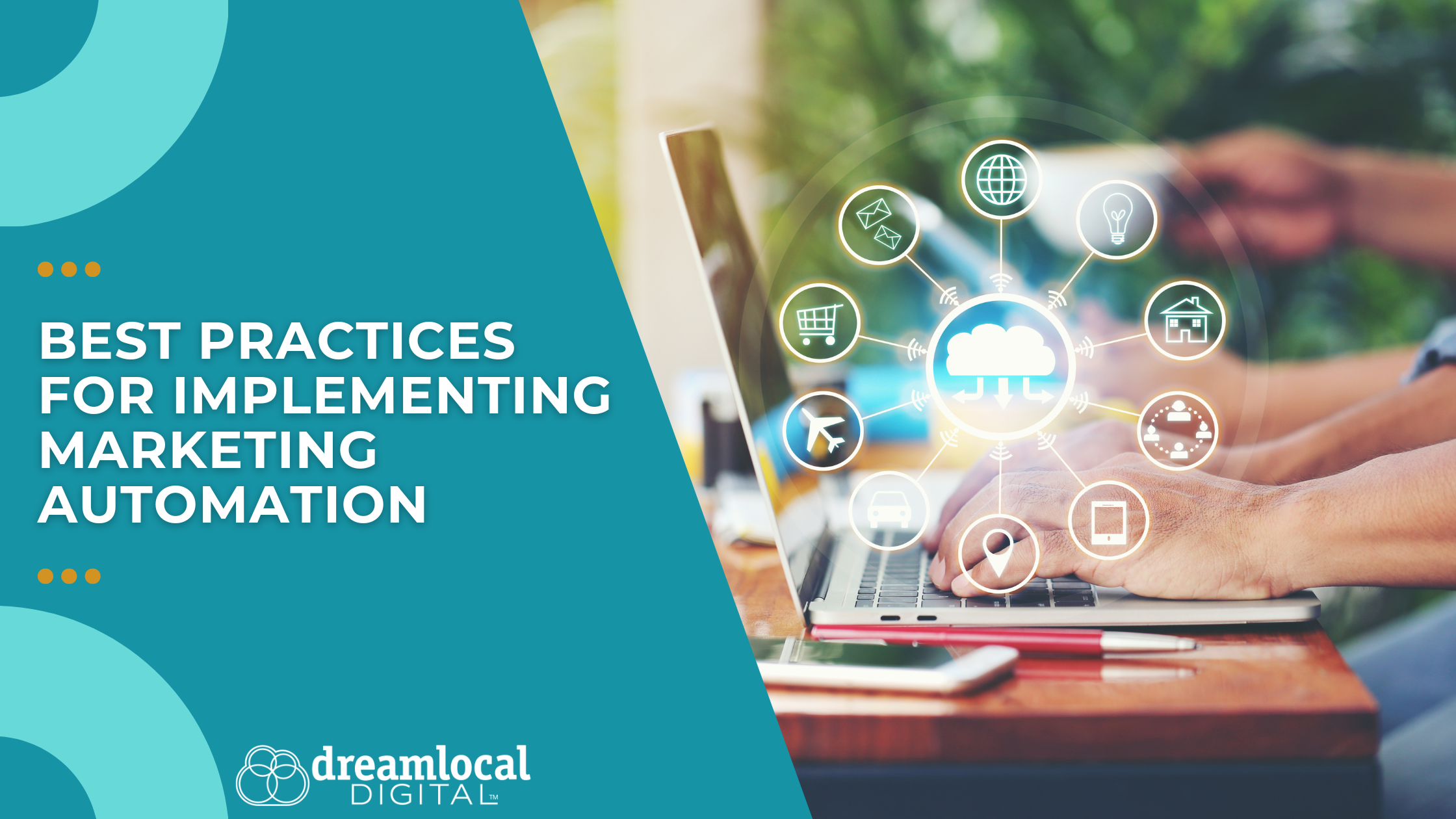Best Practices for Implementing Marketing Automation

Marketing automation enables businesses of all sizes to adapt to ever-changing consumer needs and marketing dynamics. Leveraging automation streamlines workflows and enhances customer engagement and loyalty, leading to increased brand value and business growth. This blog delves into the best practices for setting up marketing automation, highlighting its benefits and types, and providing actionable insights for successful implementation.
The Benefits of Marketing Automation
Marketing automation boasts some pretty impressive stats. By automating repetitive tasks and leveraging data-driven insights, companies can achieve higher efficiency, more personalized customer interactions, and ultimately, better results.
Some businesses using marketing automation software have seen a 451% increase in qualified leads and increased conversion rates. Here are some of the key advantages of implementing marketing automation:
-
Time Savings: Automating repetitive tasks such as email marketing, social media posts and customer segmentation frees up valuable time for your team to focus on strategic initiatives.
-
Streamlined Workflows: With automation, you can create efficient workflows that ensure consistent and timely communication with your audience, reducing the risk of human error.
-
Enhanced Customer Understanding: Automation tools collect and analyze customer data, providing insights into their behaviors and preferences. This allows for more personalized and effective marketing efforts.
-
Improved Customer Loyalty: Personalization is key in today’s market. Automated marketing can deliver customized experiences that make customers feel valued, increasing their likelihood of repeat business.
-
Scalability: Marketing automation platforms are designed to scale your business, allowing you to handle an increasing volume of tasks without a proportional increase in workload. This scalability ensures that your marketing efforts can grow alongside your business without compromising efficiency.
Types of Marketing Automation
There are several types of marketing automation tools that cater to different aspects of digital marketing:
CRM Systems: Customer Relationship Management (CRM) systems help manage and analyze customer interactions throughout the customer lifecycle. They centralize customer data, making it easier to track engagement and tailor marketing efforts accordingly.
Email Automation: Automating email campaigns allows you to send targeted messages based on customer actions, such as welcome emails, abandoned cart reminders and birthday greetings. This keeps your brand top-of-mind and drives conversions.
Social Media Automation: Tools like Hootsuite or Buffer enable you to schedule posts across multiple platforms, ensuring consistent brand presence and timely engagement with your audience.
Lead Nurturing Campaigns: Automation tools can manage drip campaigns, where a series of emails or messages are sent to leads over time. This helps in nurturing leads through the sales funnel with minimal manual intervention.
Retargeting Ads: Automated retargeting ads remind customers of products they’ve viewed on your site, encouraging them to complete their purchases.
Customer Journey Mapping: Advanced automation platforms allow you to map out the customer journey visually and create workflows that deliver the right message at the right time based on customer interactions.
Best Practices for Setting Up Marketing Automation
Define Clear Goals: Before implementing automation, establish clear objectives. Whether it’s increasing sales, improving customer retention or enhancing brand awareness, having specific goals will guide your automation strategy.
-
Segment Your Audience: Effective automation relies on precise audience segmentation. Use demographic, behavioral and psychographic data to create segments that will receive tailored messages.
-
Create Personalized Content: Personalization is crucial for engagement. Use customer data to craft messages that resonate with individual segments, making your communications feel relevant and personal.
-
Develop Comprehensive Workflows: Map out the entire customer journey and create detailed workflows. For example, if a customer signs up for your newsletter, they might receive a welcome email, followed by educational content, and later, promotional offers.
-
Test and Optimize: Continuous testing is vital for successful automation. Use A/B testing to determine what works best for your audience, whether it’s email subject lines, content formats or send times. Analyze the results and refine your strategies accordingly.
-
Integrate With Other Tools: Ensure your automation tools integrate seamlessly with your existing digital marketing platforms. This could include your CRM, email marketing software and social media management tools.
-
Monitor and Adjust: Regularly review the performance of your automation campaigns. Look at key metrics such as open rates, click-through rates and conversion rates. Use these insights to make necessary adjustments and improve your campaigns over time.
Implementing marketing automation is a game-changer for digital marketing professionals. It offers a streamlined approach to managing complex marketing tasks. By following best practices — such as setting clear goals, segmenting your audience, and continuously testing and optimizing your campaigns — you can harness the full potential of automation.
Ready to transform your marketing strategy? Partner with Dream Local Digital and harness the power of marketing automation to boost your efficiency, ROI and customer engagement. Contact us today to get started!
Newsletter Signup
Stay up to date on the latest digital marketing news, updates, and more. Sign up to receive our newsletter!




